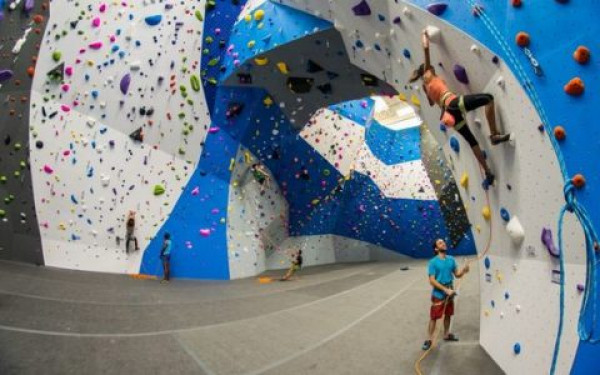
From gym to crag
If you’ve been climbing regularly at an indoor rock climbing gym but feel ready to take it to the next level, there are several things you should know. Signing up for classes offered at your local gym are a great way to boost things such as your strength and skill but outdoor rock climbing differs vastly from plastic holds. The transition from indoor climbing to the great outdoors often requires an experienced and trusted guru.
A basic knowledge of gym climbing is a good preference but not necessary. Many of the skills you can learn in an indoor gym or boulder park are certainly transferable to the rock climb world.
First of all fingers of steel are the foundation of harder climbing, and as long as you have a solid base of climbing experience, finger-strength training is an excellent addition to any climber’s training regimen. You can build a finger trainer like this.
Max finger strength is your ability to grab a hold for 5 to 10 seconds, and it is employed in lockoff cruxes or on moves that require latching tiny or slopey holds. Finger-strength gains can come from any climbing that has moves or holds that are taxing on the fingers, like bouldering at your limit, but the extraneous movement won’t translate directly to finger strength. Hangboarding targets this important element of climbing.
After you should train your techniques. Your objective in training technique is to find new techniques to perfect and bad habits to fix. The more moves you practice and the more natural each one feel, the better you’ll climb. This is especially important if your goal is to onsight and flash routes, where muscle memory is very important. Practicing with a partner is a great way to work technique, as she can spot flaws that you don’t notice on the wall. Ask your frequent partners if they’ve noticed any problems of your technique. Additionally, try filming yourself climbing to see what your weaknesses might be.
But the indoor climbing is not rock climbing. One huge difference is that climbing indoor routes that consist of plastic holds marked with tape do not translate the same way to outdoor rock climbing. Climbing a route outdoors is not like following colored pieces of tape or holds in a gym. The entire wall is considered “on” unless otherwise noted in a guidebook.
Many indoor climbers who are successful in toproping or leading at a consistent 5.10 level in the indoor boulder are under a misbeleif that the same applies to outdoors. It does not. Gyms typically will not replicate outdoor climbs as far as level of difficulty go, and for good reason. If you walked into a gym for the first time and were not able to complete a beginner boulder problem, such as a V0, you would become frustrated and probably not be interested in buying a membership
The truth is, there is a dramatic increase in difficulty when you climb outdoors. While it is fun and important to be pushing yourself physically, it’s just as important to remember to let go of your ego. When you try a lower grade or two, it becomes easier to focus on learning the skills. Because you will be using unmarked, natural holds to get to the top, it is often recommended starting on lower difficulty level routes. For example you can do it in Fontainebleau where the winter is won't be barrier and Topo Guru has all route what you need. Everything in your hand.